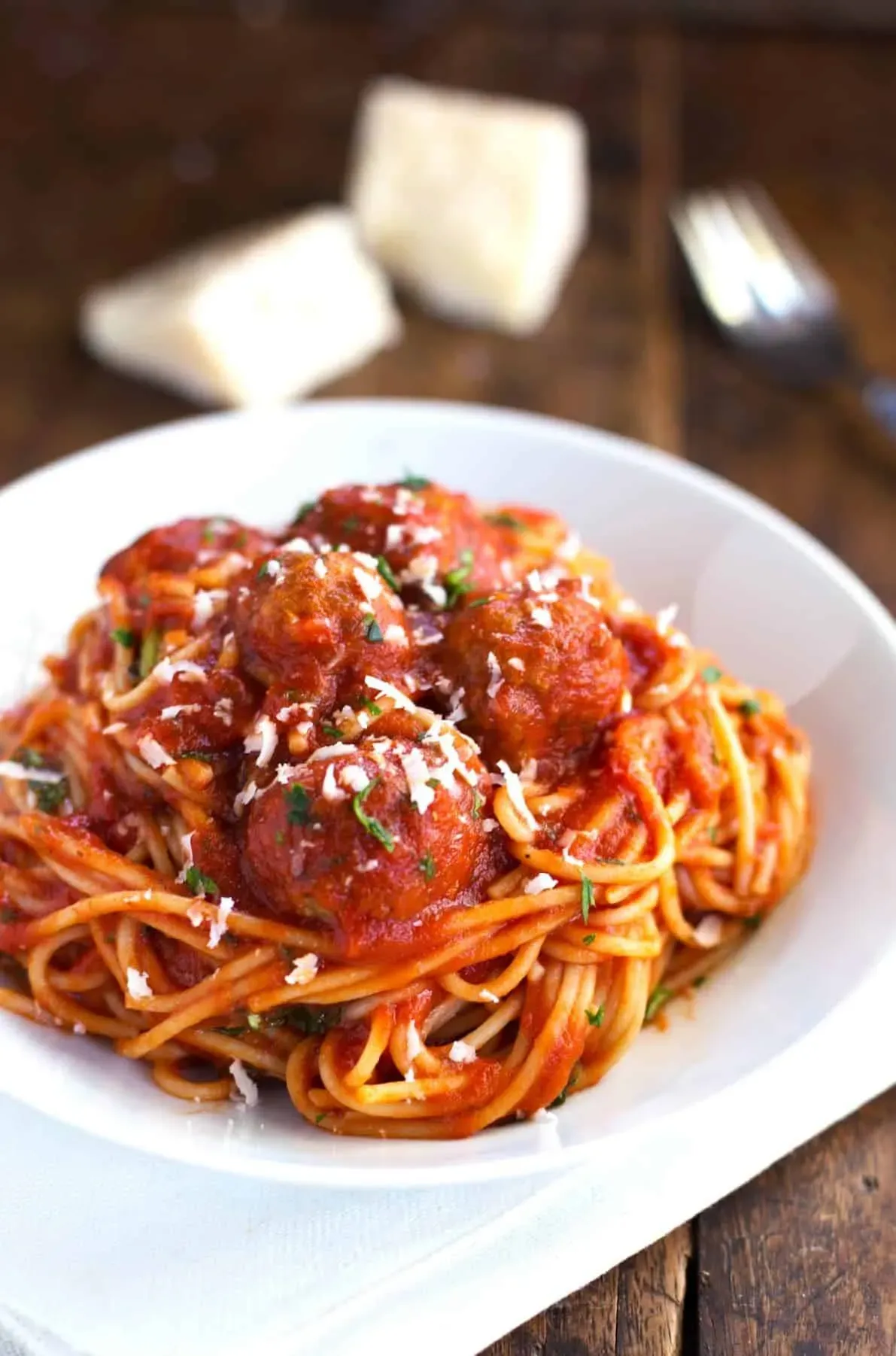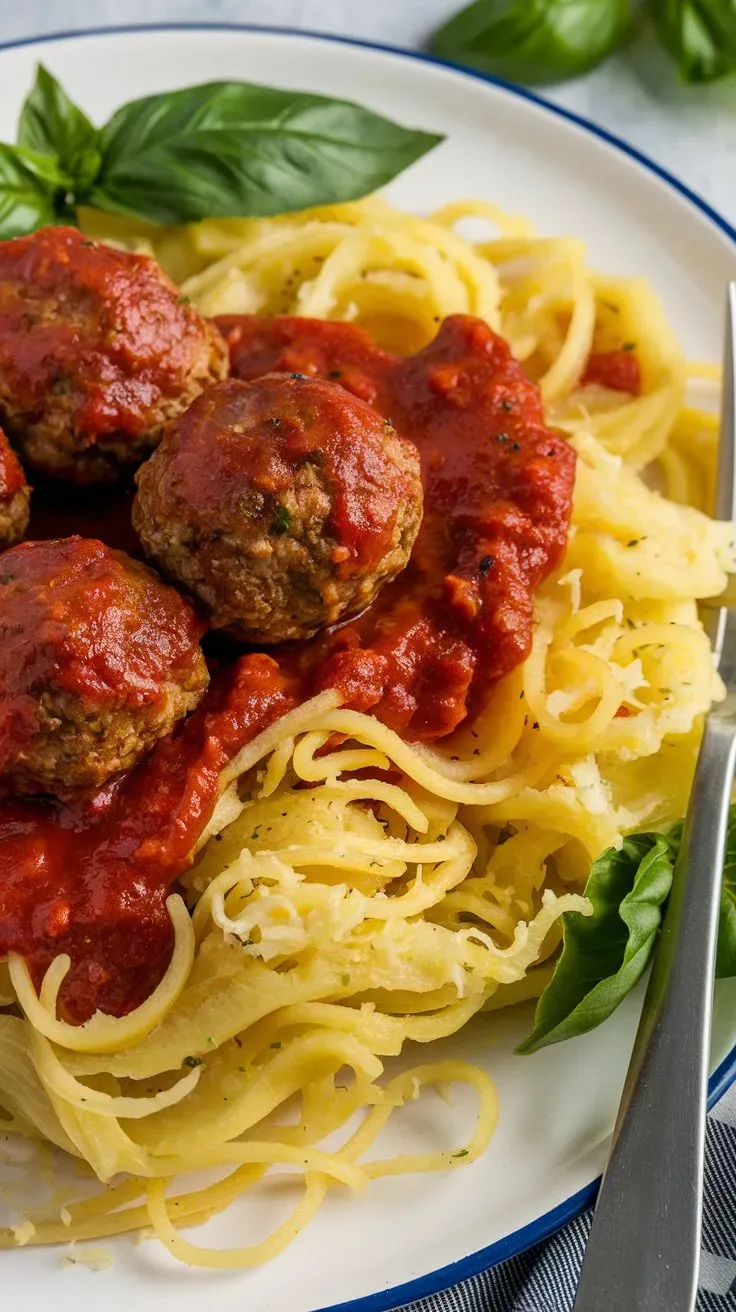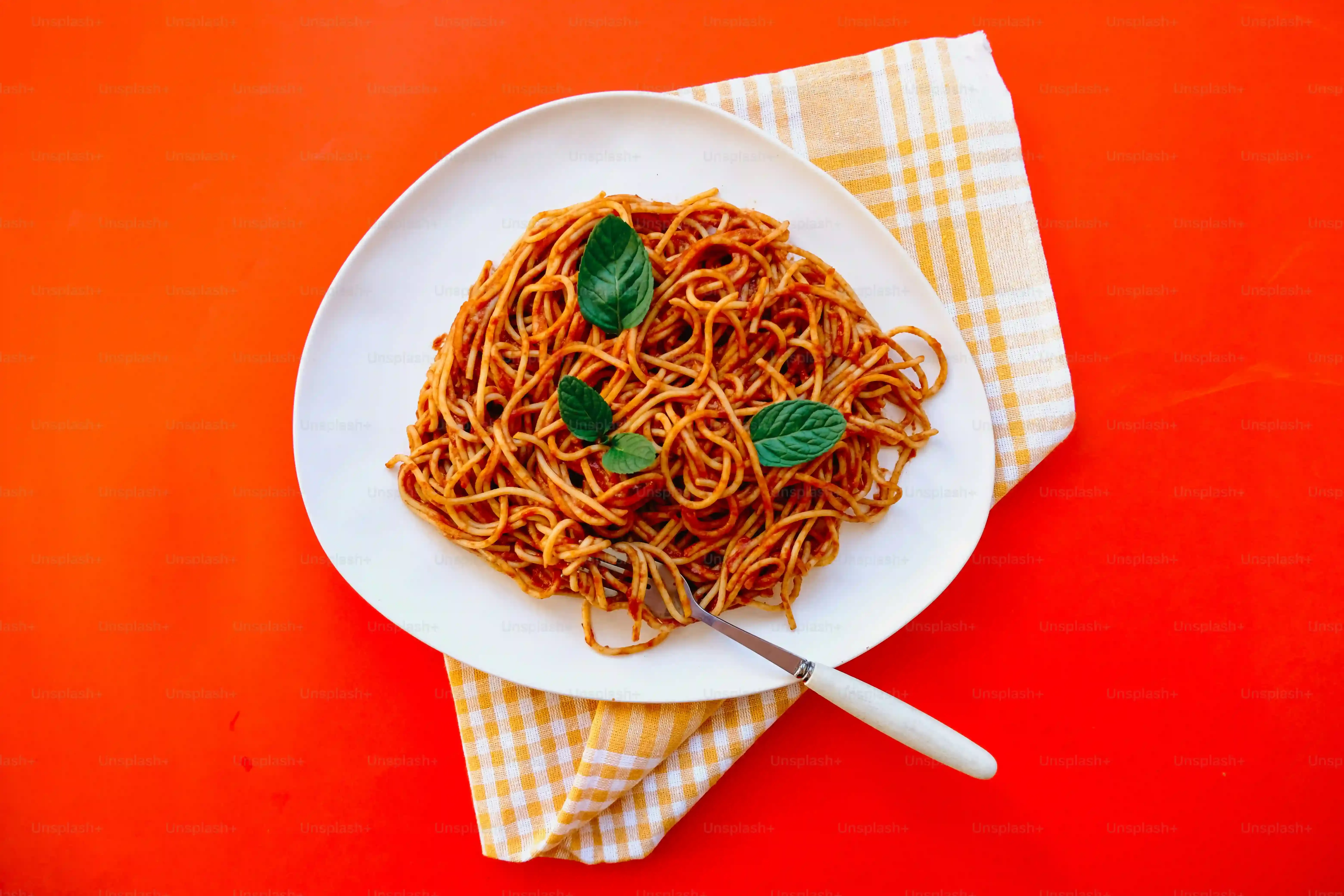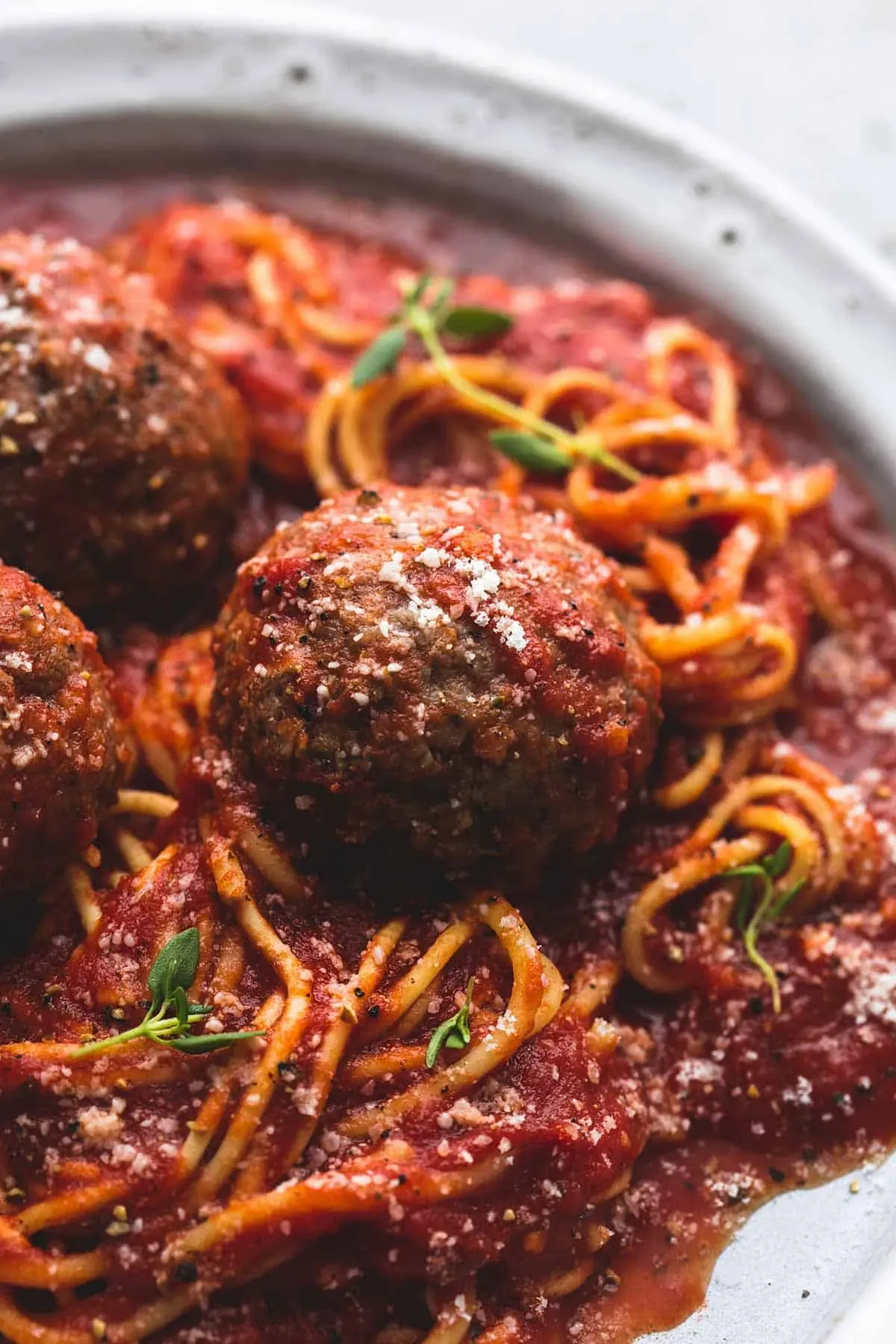Table of Contents
Let's be honest, sometimes you just need a big ol' plate of spaghetti and meatballs. It's the ultimate comfort food, right? But maybe you finish that traditional version feeling like you just ate a brick. Heavy sauces, fatty meat, refined pasta – it all adds up. What if you could have that cozy, satisfying meal without the food coma afterwards?
Why Your Plate Needs a Healthy Spaghetti and Meatballs Recipe

Why Your Plate Needs a Healthy Spaghetti and Meatballs Recipe
The Classic Comfort, Without the Crash
We've all been there. You crave that deep, satisfying hug in a bowl that only spaghetti and meatballs can provide. You whip up the classic version – heavy ground beef, maybe some questionable store-bought sauce loaded with sugar, refined white pasta. It tastes great going down, sure. But an hour later? You're ready for a nap, maybe two. Your stomach feels like it hosted a wrestling match. That post-meal slump isn't just inconvenient; it's your body telling you that meal was a bit of a heavyweight.
Eating Well Doesn't Mean Missing Out
Here's the thing: you don't have to choose between comfort food and feeling decent. A healthy spaghetti and meatballs recipe proves it. By making smart swaps – thinking leaner meat, adding sneaky veggies, choosing better noodles – you get all the flavor you love without the culinary hangover. This isn't some sad, diet version. It's real food, made smarter. Plus, it makes fantastic leftovers, which is basically winning at life.
- Avoid the post-meal bloat.
- Get more nutrients into a family favorite.
- Enjoy comfort food guilt-free.
- Create amazing leftovers for lunch or another dinner.
- Actually feel energized after eating, not ready for bed.
Flavor First, Health Second ( Maybe Tied)
Some folks hear "healthy" and picture bland, joyless food. Let's dispel that myth right now. A good healthy spaghetti and meatballs recipe is bursting with flavor. We're talking herbs, spices, rich tomato goodness, and meatballs that are juicy because of what's *in* them, not just the fat content. It's about enhancing the natural taste of quality ingredients, not stripping everything away in the name of health. Your taste buds will thank you, and so will your waistline.
The Lineup: What You Need for This Lighter Spaghetti Dish
Gathering Your Culinary Avengers
Alright, let's talk grocery list. Building a better spaghetti and meatballs starts right here, in the aisles. Forget the brick of mystery meat and the jar of sauce that reads like a chemistry experiment. We're aiming for fresh, simple, and flavorful. You'll need some lean ground meat – think turkey or chicken, which lighten things up considerably compared to beef. Don't worry, we're adding flavor back in spades. Then, grab some veggies; finely chopped onion, bell pepper, or even zucchini can sneak into those meatballs for moisture and nutrients without anyone noticing (especially picky eaters, wink wink). You'll also want some whole wheat breadcrumbs – they bind the meatballs and add fiber, a definite upgrade from the white stuff. For the pasta, look for whole wheat spaghetti or try lentil/chickpea pasta for a protein boost and lower glycemic impact. Finally, a good quality store-bought marinara is fine if you're short on time, just check the label for added sugar and keep the ingredient list short and recognizable. Or, if you're feeling ambitious, whip up a quick homemade sauce with canned crushed tomatoes.
Building Better Meatballs: The Secret to Healthy Spaghetti and Meatballs

Building Better Meatballs: The Secret to Healthy Spaghetti and Meatballs
Building Better Meatballs: The Secret to Healthy Spaghetti and Meatballs
let's talk meatballs. This is where a standard spaghetti dish often goes off the rails in the "healthy" department. Traditional recipes lean heavily on fatty beef for moisture and flavor. We're taking a different approach for our healthy spaghetti and meatballs recipe. The secret weapon? Chopped vegetables. Seriously. Finely mince some onion, garlic, maybe a little bell pepper or even shredded zucchini. Mix this into your lean ground turkey or chicken. This isn't just filler; these veggies add moisture, nutrients, and surprisingly, a depth of flavor that complements the meat without weighing it down. Combine your meat and veggies with whole wheat breadcrumbs, an egg to bind, and a generous hand with herbs like parsley, oregano, and maybe a pinch of red pepper flakes for a little kick. Don't overwork the mixture; gentle hands make tender meatballs.
From Pan to Plate: Cooking Your Healthy Spaghetti and Meatballs

From Pan to Plate: Cooking Your Healthy Spaghetti and Meatballs
Baking for Better Meatballs
Forget frying these little guys. For this healthy spaghetti and meatballs recipe, we bake them first. Why? Less mess, less added fat, and it helps them hold their shape beautifully before they hit the sauce. Preheat your oven to a solid 400°F (200°C). Line a baking sheet with parchment paper – trust me on the parchment, cleanup is a breeze. Gently roll your meatball mixture into uniform balls, maybe golf-ball size. Place them on the prepared baking sheet, giving them a little space. Slide them into the oven for about 15-20 minutes, or until they're lightly browned and cooked through. You'll see some moisture render out, which is good; that keeps them from being greasy later.
Simmering in Sauce
Once your meatballs are baked, it's time for them to take a bath in that beautiful tomato sauce you've got simmering on the stove. If you're using store-bought, warm it up in a large pot or deep skillet. If you made your own, it should already be ready. Carefully transfer the baked meatballs into the sauce. Make sure they're mostly submerged. Bring the sauce to a gentle simmer, then lower the heat, cover, and let everything bubble away for at least 20-30 minutes. This simmering time is crucial. It allows the meatballs to absorb the flavors of the sauce and become incredibly tender, while also infusing the sauce with their savory goodness. This step is where the magic happens for a truly delicious healthy spaghetti and meatballs recipe.
Meatball Cooking Method | Pros | Cons |
|---|---|---|
Baking (as in this recipe) | Lower fat, holds shape, easy cleanup, consistent cooking. | Requires oven time, less immediate browning than frying. |
Frying | Quick browning, crispy exterior possible. | Adds fat, can splatter, harder to cook evenly, more prone to falling apart. |
Simmering Raw in Sauce | One pot method. | Meatballs can break apart, sauce can become greasy, harder to control doneness. |
Pasta Prep and Plating
While the meatballs are doing their thing in the sauce, get your pasta water boiling. Remember, we're aiming for whole wheat or a lentil/chickpea option for extra points on the healthy spaghetti and meatballs recipe scale. Cook your pasta according to package directions until al dente – that means it still has a little bite to it. Drain the pasta, but save about half a cup of the starchy pasta water before you do. You might need it to loosen the sauce later. Divide the cooked pasta among plates or shallow bowls. Spoon a generous helping of the simmering meatballs and sauce over the top. Garnish with some fresh basil or a sprinkle of nutritional yeast if you're keeping it dairy-free, or a little grated Parmesan if that's your jam. Serve immediately and enjoy the fruits of your (not-so-laborious) labor.
Making it Yours: Tips & Tricks for Healthy Spaghetti and Meatballs

Making it Yours: Tips & Tricks for Healthy Spaghetti and Meatballs
Spice It Up or Sneak More Veggies In
Alright, so you've got the basic healthy spaghetti and meatballs recipe down. Now what? This is where you get to play. Feeling a little wild? Add a pinch of red pepper flakes to the meatball mixture for a kick, or even a dash of smoked paprika for something different. Want to boost the veggie power even more? Try grating carrots or finely chopping mushrooms into the meatballs alongside the onion and garlic. They'll blend right in, adding nutrients and moisture without changing the flavor profile dramatically. You can also load up the sauce with extra vegetables – sautéed bell peppers, onions, or even some wilted spinach stirred in at the end. Don't be afraid to experiment with different herbs too; fresh basil and oregano are classic, but a little thyme or rosemary can add an interesting twist.
Sauce Boss and Noodle Know-How
Let's talk sauce and noodles. While a good quality store-bought marinara is a solid starting point for your healthy spaghetti and meatballs recipe, making your own is surprisingly easy and gives you total control over ingredients (read: no hidden sugar). A simple crushed tomato base simmered with garlic, onion, and herbs is fantastic. If you want something richer, a splash of red wine can do wonders. For the pasta, don't feel limited to whole wheat. Explore options like spaghetti squash for a low-carb alternative, zoodles (zucchini noodles) for a fresh, light take, or even gluten-free pasta made from rice or corn. Each option changes the texture and nutritional profile, letting you tailor the dish to whatever you're craving or whatever dietary needs you have.
- Swap turkey for lean ground chicken or even a plant-based crumble.
- Add grated zucchini, carrots, or finely chopped mushrooms to the meatballs.
- Boost sauce flavor with a pinch of red pepper flakes or a splash of red wine.
- Try spaghetti squash or zoodles instead of traditional pasta.
- Finish with fresh herbs like basil or parsley for brightness.
Enjoying Your Lighter Load of Comfort
So there you have it. A healthy spaghetti and meatballs recipe isn't some mythical creature. It's entirely doable, and frankly, pretty satisfying. You get the classic comfort food vibe without feeling like you need a nap and a digestive aid afterward. It’s proof that a few thoughtful swaps can make a world of difference on your plate and in how you feel. Go ahead, ladle up a generous portion.